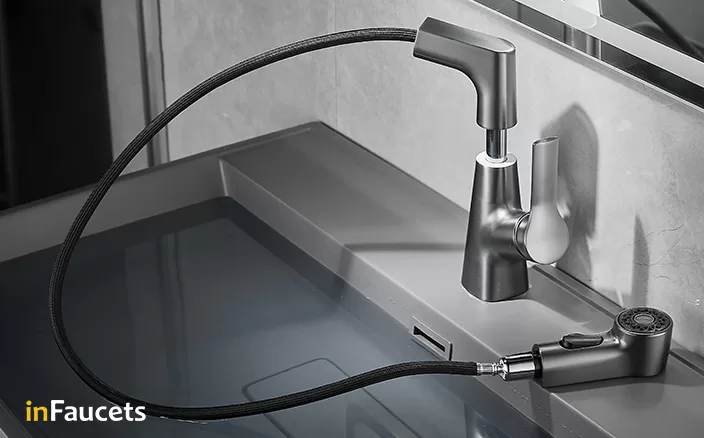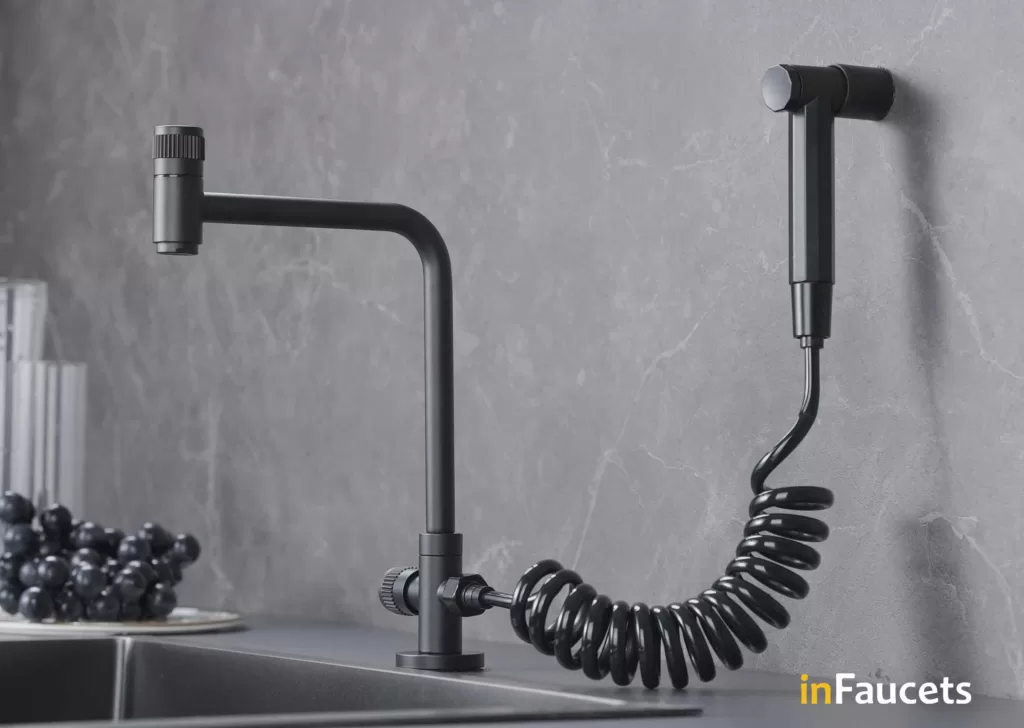Best Ways to Test Your Water Tap Quality
Even though the EPA has strict water quality standards for water supply companies, recent research shows tap water still has high levels of harmful contaminants. Yes! It sounds preposterous, but there are several reasons why your tap water isn’t safe enough for drinking, bathing, and cleaning.
A few water supply companies outright fail to comply with the EPA setting standards—just to pay fines. Moreover, the Environmental Protection Agency doesn’t test every contaminant present in water, plus some of these water safety tests aren’t done appropriately—more reason to take matters into your own hands.
Great news! Thanks to technology, you can easily test out the quality of your tap water when you feel something isn’t right. But where do you start?
We got you covered. Here are three ways you can effectively test your tap water quality. But, first things, let’s look at pollutants that water companies don’t always catch.

What Contaminants Might You Find in Your Tap Water?

Depending on your local area, the quality of your tap water will depend on the concentration of bacteria, pesticides, nitrates, lead, hardness, Chlorine, and pH. These harmful contaminants can disinfect and cause scale buildup in pipes—not to mention corroding pipe fixtures.
Now that you’ve had a better understanding of what you’d expect in your tap water. Here are ways to check for harmful contaminants in your tap water.
At-Home Test Kits
Just like the name suggests, a home test kit will assist you in determining the water quality at the comfort of your home. They come in different types, including test strips, a TDS electronic handheld meter, plus a chemical titration test.
Here’s how you go about testing for water quality using a home water quality test kit.
Identify What Water Sources to Test
The type of testing kit you’ll go for will depend on the water source you’re testing. There are different water testing kits for different areas; like well water needs a water quality testing kit that’ll provide a detailed report that includes screening pesticides. If you’re trying to test your drinking water, then basic strips that can determine nine common contaminants will get the job done.
Testing Water Quality Method
Most at-home testing kits are meant for one-time use. Before buying a water testing kit, it’s imperative to consider whether or not you’ll follow up with professional testing. Most strips offer a range of scores and just a singular score. With increased number of tests, it can increase the prices.
Far from that, you can also get powder kits for bacteria testing. Both kits test for contaminants in water. So, you can easily go for one that’s convenient for you.
Buy a Drinking Water Test Kit
As stated earlier, there are many versions on the market, but they all function the same way. It has a test strip that you submerge in your tap water, causing it to change color depending on the minerals in your water.
The kit will come with a color chart to match the strip’s color. Make sure you go for one that has different stripes for hardness, Chlorine, Nitrates, Bacteria, and Ph. Those that come with a single type of strip are only testing for Ph.
Read the Manual
Everything in this day and age comes with a manual. It’s pretty much instruction on how you’ll take the test. The manual will tell you how long your strip needs to be submerged in your tap water.
What temperature should your water be at for accurate results—these directions may vary from kit to kit. So, even if you’ve done this process before, it’s imminent that you read the instructions in the kit’s manual.
Expose the Test Strip to your Drinking Water
It’s time to take action—with the guidelines on your water test kit, expose your strip to your drinking water. The process is simple; you’ll start by filling a glass with water at room temperature. Then, expose the test strip to this water, ensuring it is completely submerged for five seconds—moving the strip back and forth.
Remove the Submerged Strip from Water
Remove the test strips from your tap water, and dry all the excess water. Wait for it to change color while comparing it to colors on the color chart that’s on your water testing kit.
Determine your Tap Water Quality
Lastly, compare the color of your test strips with the colors on the chart. Each color will determine the amount of minerals present in your drinking water. The chart will determine different concentration levels as safe or hazardous.

If you attain any hazardous score for pH, bacteria, and minerals, it’s important to repeat the above process to rule out human error. You’ll need to contact your local municipality when you get the same result a second time in a row.
Buying DIY water quality test kits may not be your cup of tea. But if you still want to determine your water quality, here’s another way to do it.
Hire a Professional for Quality Water Testing
If you wish to shun away from inaccurate water tests, then getting professional testing is inevitable. The expert will visit your house and collect water samples to go and test in private testing facilities for anything that’s contaminating your water. So, how do you find these experts to get professional lab tests?
Using EPA Database
To get such expert, the EPA offer database that allows you to locate professional testing labs near you. The experts will conduct professional water testing to determine contaminants present in your water.
Google Search for Professional Testing
Searching for these experts on the Google search engine is another great way to find them. You’ll go in and search keywords like “test my water,” ensuring you put in your zip code. It’ll give you tons of testing facilities and their contacts near you.
Home Inspector
If you haven’t had any luck with the two options, a home inspector can be handy. Ask your home inspector if he or she does environmental testing far from their general inspection. Search on search engines may not get you far, but a home inspector can give free consultancy on what to do.
Partnering with a professional who’s familiar with your locality is a plus. They’ll know what questions to ask and which test to run. For instance, if homes, public or private water systems are affected, the certified lab will know how such a circumstance will affect their choices in the lab. The services are expensive; for example, a city water test kit stems from $129, depending on your locality.
Professional Water Testing Kits
The third option combines an at-home water test kit with certified lab results. Where do you start? Easy—you first collect your water sample at home and then send it to a certified lab to test the water. There are various ways to do this easy peasy.
- EPA offer a free testing program
- Using your own dime
Before you spend your hard-earned money, conduct extensive research on whether or not your government or local supplier offers free at-home tests. If they do, will they cover for the collection kit and the lab tests. Many states have their own testing program, so be sure to check that out.
If your municipality offers such programs, you’ll need to locate a company that offers an at-home water kit with expert testing. They provide testing vials plus in mail kit. Afterward, you’ll need to collect vials of your drinking water, then mail it back to them.
In just a few weeks, the testing company will mail you a detailed report on what contaminants or other local environmental water hazards you should be aware of. It’s definitely a great middle ground if the two options aren’t a great fit for you.
But there’s one last bonus way to look at!
Use your Senses

As cliche, as it sounds, your sense can help a great deal when it comes to determining water quality in your home. So, where do you start? Just like home water quality test kits, you’ll follow a particular process. Let’s look at it.
Smell your Drinking Water
Smelling your drinking water can help you determine a great deal when it comes to testing your water quality. Even experts initially start by smelling, touching, and tasting it. Water quality testing through smell;
- Bleached smell: This is likely due to the Chlorine your local water companies have put into it to be safe. The smell will disappear once the water is exposed to air. A home water filter will help you get rid of this scent. The bleach smell is generally not harmful.
- Rotten egg smell: Usually, this scent suggests growth in bacteria. Fill in a glass of drinking water, then take it to another room. Wait for about five minutes, then smell it. If the water doesn’t have a sulfurous smell, then a chance of bacteria growing on your drains is imminent.
- Cleaning the drain should pretty much get rid of this smell. In cases where you went to another room but still have a sulfurous smell on your water—for both hot and cold water, contact your local water supply company.
- Earthy Smell: This can be as a result of decaying matter. It can be due to decaying matter or just the water itself.
Tasting your Drinking Water
You can use your taste buds to determine the quality of your water. Here’s how you do it.
- If your water tastes foul, spit it out quickly and contact your local water supply company.
- Metallic Taste: Usually, this is due to low pH levels, or the water has an extreme concentration of minerals due to rusty pipes.
- Bleach Taste: This can be due to excess Chlorine in your water.
- Salty Taste: Indicates the presence of chloride ions or sulfates and can be due to industrial waste and irrigation drainage. Contact your local water companies to rectify such problems.
Cloudiness and Particles
Fill in a glass with water, and hold it up high to check for particles or cloudiness. Redness, or brownish particle, is due to rusty pipes. Black particles can be as a result of water running through the hose. White tan is a result of excess calcium or magnesium carbonate in water. If you notice this cloudiness in the water, ensure you contact your local municipality.
Take Away!
With the Safe Drinking Water Act initiated in most states, clean water has been a necessity. Individuals must therefore ensure they use treated or filtered water will ensure they don’t get any bacteria and germs that cause waterborne disease. If you suspect your water isn’t safe for drinking or general use, test it using one of the three methods mentioned above.

